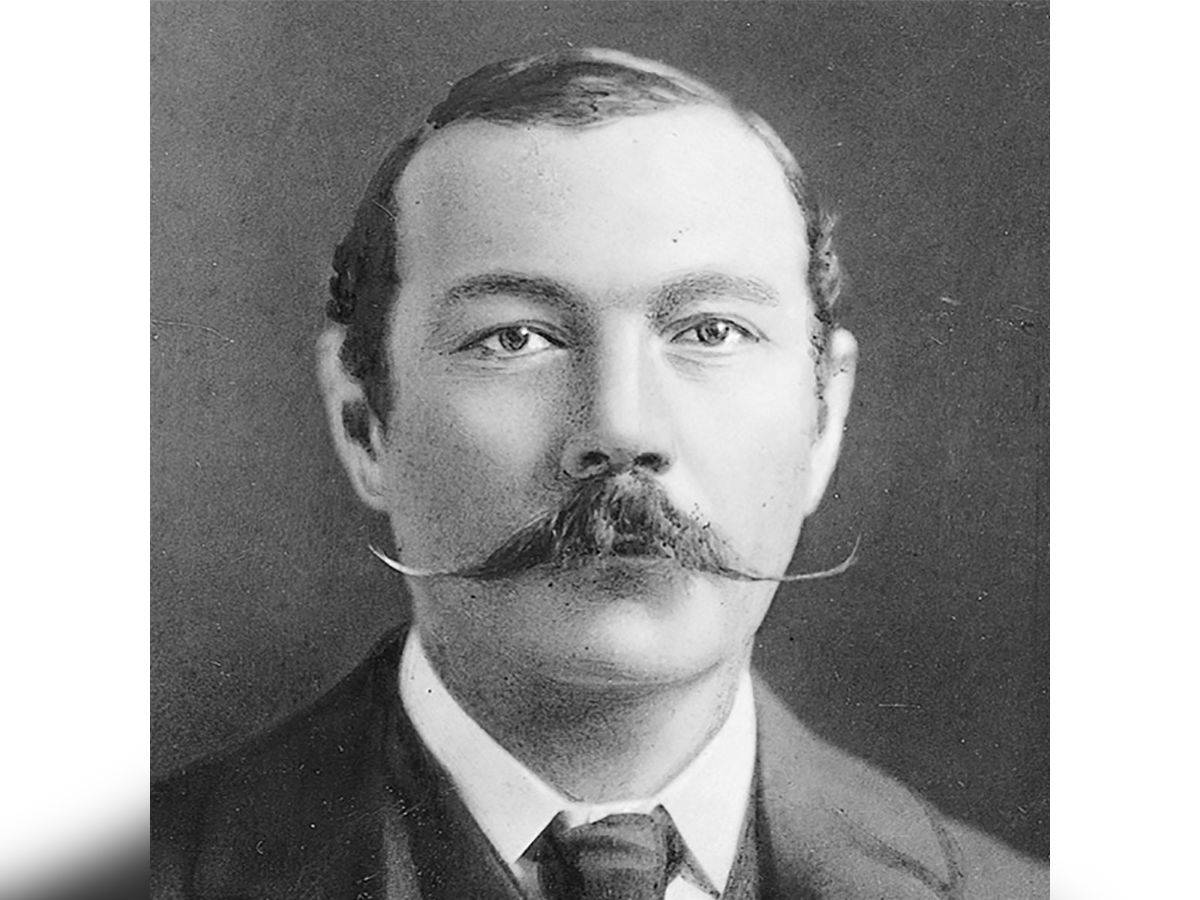
Sir Arthur Conan Doyle, the famous creator of Sherlock Holmes, wrote 56 short stories and four novels about his intrepid detective. But in the midst of his prolific writing career, he also found time to play a lot of cricket and many other sports. He once disclosed that the name Sherlock belonged in real life, to a cricketer against whom he had once played. He liked the name so much that he decided to name his hero Sherlock Holmes.
Doyle was a keen sportsman and played as a football goalkeeper for Portsmouth Football Club (now defunct) and as a cricketer he played ten first class matches for the prestigious Marylebone Cricket Club (MCC). During his cricket career, he once dismissed the great Dr. W.G. Grace who is often referred to as the grand old man of cricket.
Doyle was so elated at having got the prize wicket of Grace, that the next day he composed a poem about his own feat. Incidentally, both Grace and Doyle were from the medical field. While Dr W.G. Grace was a general practitioner, Doyle earned an MD from the University of Edinburgh. Later Doyle also wrote an article about Grace which was titled: “The greatest of cricketers: An appreciation of Dr. Grace.”
Doyle began playing cricket when he was in school in 1873. He continued to play at different levels till 1912. In all it is said that he played in 449 matches representing more than 50 different teams. The main teams that he played for were Portsmouth, Hampshire, Rovers, Norwood, and MCC.
Later he also played cricket matches with his author friends such as J.M. Barrie (creator of the children’s fictional character of Peter Pan), E.W. Hornung (writer of the Raffles thriller novels), and P.G. Wodehouse the well known humor writer.
Doyle’s own love for sport and outdoor activities made him ascribe similar skills to his fictional character Sherlock Holmes. In the stories that Doyle has written, Sherlock Holmes is portrayed as a man who is an excellent boxer and a swordsman. These qualities help him to overcome villains in some of the stories.
Doyle himself was an amateur boxer and had wide ranging knowledge about the rules and regulations of boxing. In this connection, he was invited as the referee in a world championship bout between James Jefferies and Jack Johnson in 1909. Doyle was inclined to accept the offer but pulled out later because he was not well enough to travel to Nevada in the USA where the bout was scheduled to be held.
The bout eventually took place in 1910 and was labelled as the “fight of the century.” Jack Johnson who was black defeated the white Jefferies and the result triggered race riots in dozens of cities in the USA.
On another occasion, Doyle did duty as one of the three judges for the world’s first major bodybuilding competition, which was organised by Eugene Sandow, the legendary bodybuilder and sports promoter who was often called the “Father of World Bodybuilding.” The event was held at the Royal Albert Hall in London.
It is not very well known that Doyle also wrote a short story based on cricket. The name of the story was: “The Story of Spedegue’s Dropper.” The idea came to the author’s mind after he was bowled by an unusual delivery from a bowler named A.P. Lucas.
The story relates how a young man named Thomas Spedegue, developed a unique bowling method called “dropping” in which the ball goes high into the air and drops exactly on the stumps. With his mastery over this unusual ball, he is selected to play for England and helps his team to defeat Australia in a Test match.
When Doyle passed away at the age of 71, Wisden magazine wrote: “Although never a famous cricketer, he could hit hard and bowl slow with a deceptive flight. In 1999, while playing for MCC against Cambridgeshire, he took seven wickets for 61 runs.” So apparently the author who could spin the most absorbing tales of mystery and terror, could also spin out many batsmen on the cricket field.



